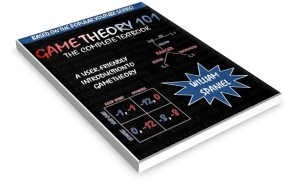Recall from last time that a strategy is strictly dominated if another strategy exists that always pays strictly more regardless of what other players are doing. Rational players will never use such strategies.
Thinking about this for a moment, a follow up question emerges. If I know my opponent has a strictly dominated strategy, I should reason that my opponent will never play that strategy. Internalizing that might make change what I want to do in the game.
This lesson formalizes that idea, showing how to use strict dominance to simplify games. In fact, the logic can grow more complicated. It may be that after I factor in your strictly dominated strategy, one of my strategies becomes strictly dominated. Then you can reason that I will not play something because you know that I can reason that you will not play something. Iterated elimination of strictly dominated strategies is the process that guides that thinking.
Takeaway Points
- We may remove strictly dominated strategies from a game matrix entirely.
- A reduced matrix will still give us all the necessary information we need to solve a game.
- We may continue eliminating strictly dominated strategies from the reduced form, even if they were not strictly dominated in the original matrix. (Note this follows directly from the second point.) We call this process iterated elimination of strictly dominated strategies.
- If a single set of strategies remains after eliminating all strictly dominated strategies, then we have a prediction for the game’s outcome.
- Iterated elimination of strictly dominated strategies cannot solve all games. We will have to broaden our solution concept if we want to make progress elsewhere.

